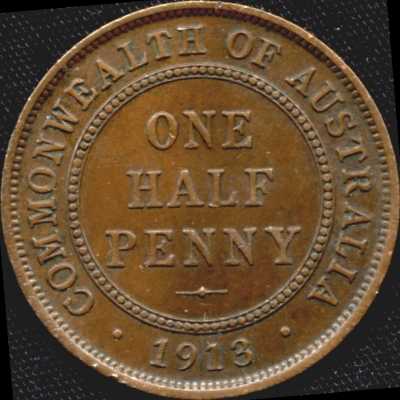
|
|
|
Designation |
|
|
Mint |
|
|
Mint mark |
|
|
Mintge |
|
John Dean1 described four
varieties of the 1913 halfpenny but one of those was just a die crack with the other
three differing in the width of the date. Robert Clarke2
listed a "wide date" variety although his measurement of 6mm for the width
is rather short of the mark. My own investigations show three varieties differing
in the width of the date and the orientation of the digits suggesting multiple master
tools for 1913.
 |
H13L.1A |
|
The illustrations here are at twice the magnification of the main image and clearly
show the differences between the three date varieties. |
The differences in position and orientation of the date digits suggest that something
rather unusual happened in 1913. To strike over two million coins, at least 10 and
perhaps as many as 40 working dies would have been needed, with the most likely
number being in the range 20 to 25. Clearly the date was not hand-stamped onto each
working die for if that had been done, no two working dies would have been exactly
alike and we would observe a much greater range of varieties. Therefore the working
dies must have been punched from fully-dated derivative master tools and the fact
that we can see three different date configurations means there must have been at
least three such separately-prepared dies. This raises the question of why three
or more tools were prepared when one master die would have been sufficient, as it
was in other years (1911, 1912, 1914, 1915 and so on). If anyone can offer an explanation
then I'd be very interested.